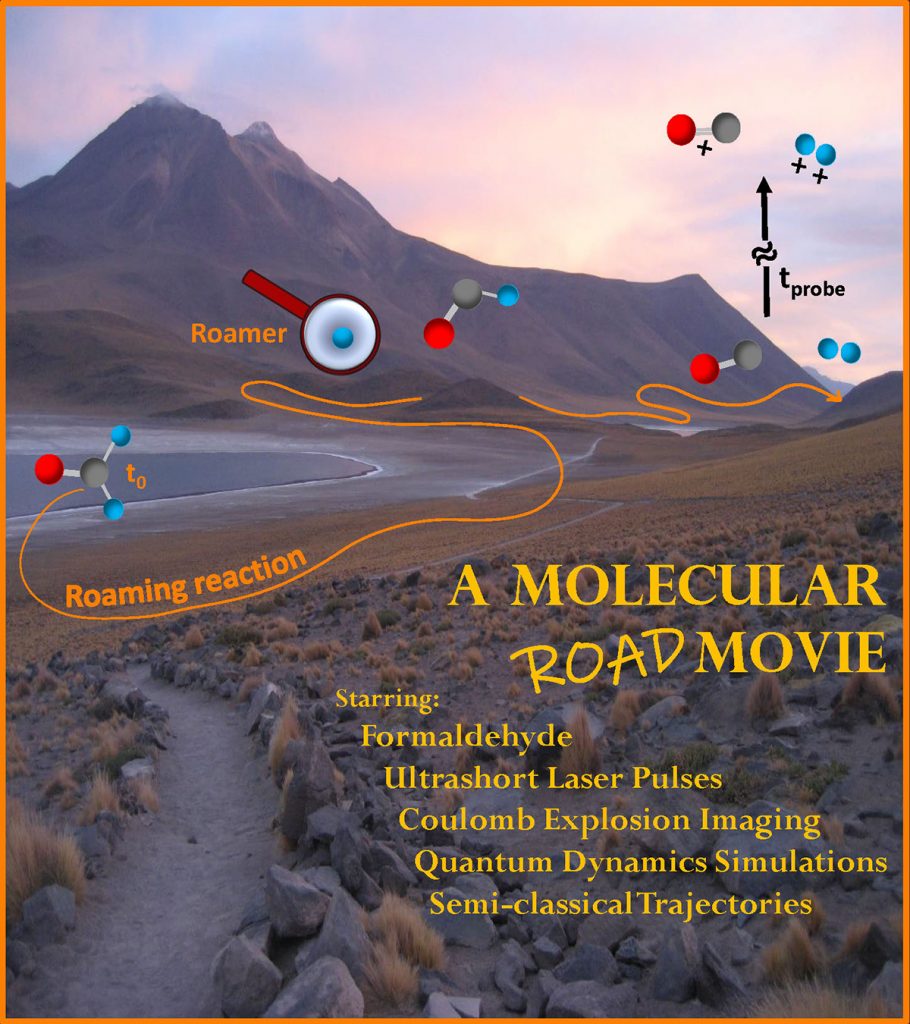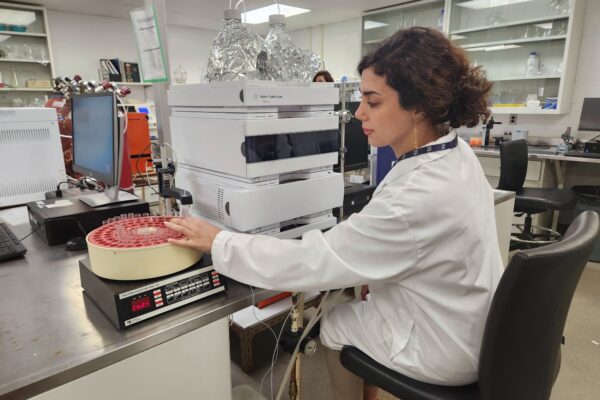- Research
The observation of a chemical reaction at the molecular level in real-time is a central theme in experimental chemical physics. An international research team has captured roaming molecular fragments for the first time – a molecular road movie. The work, under the supervision of Heide Ibrahim, research associate at the Institut national de la recherche scientifique (INRS), was published in the journal Science.

The research group of the Énergie Matériaux Télécommunications Research Centre of INRS, with support of Professor François Légaré, has used the Advanced Laser Light Source (ALLS). They have succeeded in shooting the first molecular film of “roamers” (hydrogen fragments, in this case, that orbit around HCO fragments) during a chemical reaction, by studying the photo-dissociation of formaldehyde, H2CO.
A molecular road trip
“What we see in this new discovery is that, just like in a “road trip”, the final goal is not known at the beginning nor is the path always straightforward. In general, molecules, like humans, follow the easiest path to get from point A to point B, in order to minimize the energy expended”, explains Heide Ibrahim. “However, sometimes travellers may decide to take a little detour”. Apparently, the same is true for fragments of molecules. This process called “roaming” was first discovered in formaldehyde molecules in 2004. Since then, indirect traces of wandering fragments, called “roamers”, have been detected in many molecular systems.
However, it is only recently that Dr. Ibrahim’s team has been able to “catch them along the way”, to pursue the analogy, and captured them in real-time. This is the first direct observation of the elusive phenomenon of “roaming” observed to date. “It is as if, following the discovery of dinosaur footprints, a film was discovered showing them wandering!”, continues the researcher.
Mapping the fragments

In addition to this roaming journey, there is also conventional dissociation, where the molecule splits into fragments upon excitation by ultrashort UV laser pulses. The fragments can reach the same end-products by following direct (dissociation) or indirect (roaming) pathways. “To conduct this work, one cannot simply wait for the arrival of a fragment at the finish line, since this does not provide any information on the dynamics it has undergone. It was as if the road trip was done without GPS and we could not retrace the route taken by the travellers”, underlines Heide Ibrahim. To remedy this, the team found a way to identify which fragment followed which path by placing checkpoints along the route, which act a bit like cell towers allowing a signal to be activated at a specific point along the route.
One of the numerous challenges in the experiments was related to the fact that the signal of these undecided molecules occurs statistically. Imagine wanting to take a picture of a traveller on the road, but you only have the name of the road and he may pass by at any time throughout the week. To add to the difficulty, the experimental signal, in this case, is ultrafast (on the scale of 100 femtoseconds, or ten billion times less than a millisecond) while extending over several orders of magnitude in time. Tomoyuki Endo, the first author of the study, a former post-doc of INRS now at the Kansai Photon Science Institute (Japan), was able to follow the “roamers” using a technique called time-resolved Coulomb Explosion Imaging (CEI).
The teams of Michael Schuurman (National Research Council, Ottawa), Paul Houston (Cornell University, Ithaca, USA) and Joel Bowman (Emory University, Atlanta, USA) provided high-level theoretical support at all critical experimental stages.
“The results show that time-resolved CEI can go beyond the imaging of coherent molecular dynamics – here, we follow statistical processes using conventional tabletop ultrafast lasers,” says Professor Légaré, director of the ALLS lab where the experiments took place. “In the near future, thanks to advances in high repetition rate laser systems, it will be possible to study more complex molecules.“
“Although roaming remains an elusive process that is difficult to grasp, this scientific breakthrough provides insight into how to measure it – as well as other statistical processes that require highly sensitive detection, in the face of disruptive background signals,” concludes Heide Ibrahim. Ultimately, this may be just the beginning of another winding journey towards some of Mother Nature’s secrets; roaming is a process whose role in environmental and atmospheric chemistry is only at the beginning of being understood.”
More about Heide Ibrahim’s research – the molecular road movie.
About the article
“Capturing roaming molecular fragments in real time” was published in Science, November 27,2020. Tomoyuki Endo, Simon P. Neville, Vincent Wanie, Samuel Beaulieu, Chen Qu, Jude Deschamps, Philippe Lassonde, Bruno E. Schmidt, Hikaru Fujise, Mizuho Fushitani, Akiyoshi Hishikawa, Paul L. Houston, Joel M. Bowman, Michael S. Schuurman, François Légaré and Heide Ibrahim participated in the study.




